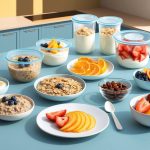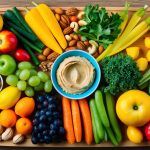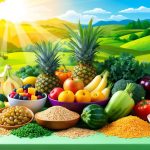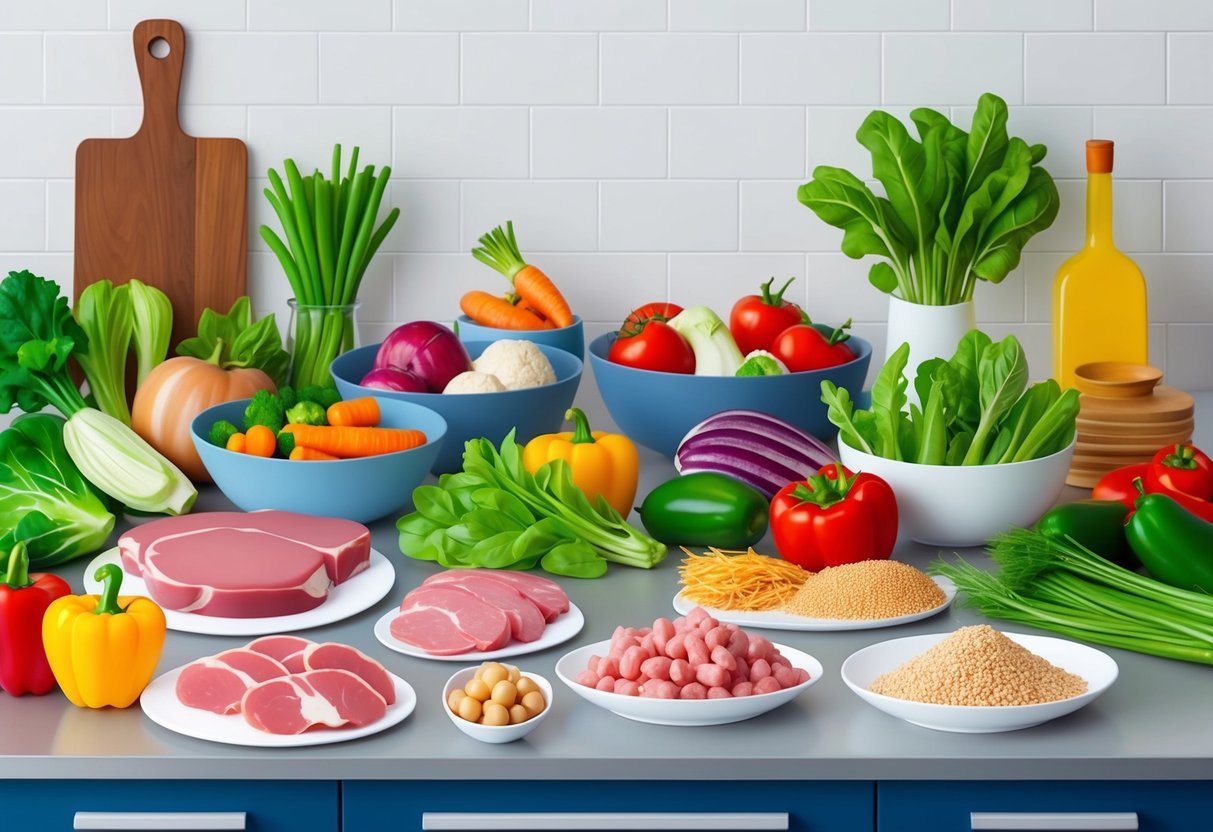
Adding Flavor to High-Protein Meal Prep
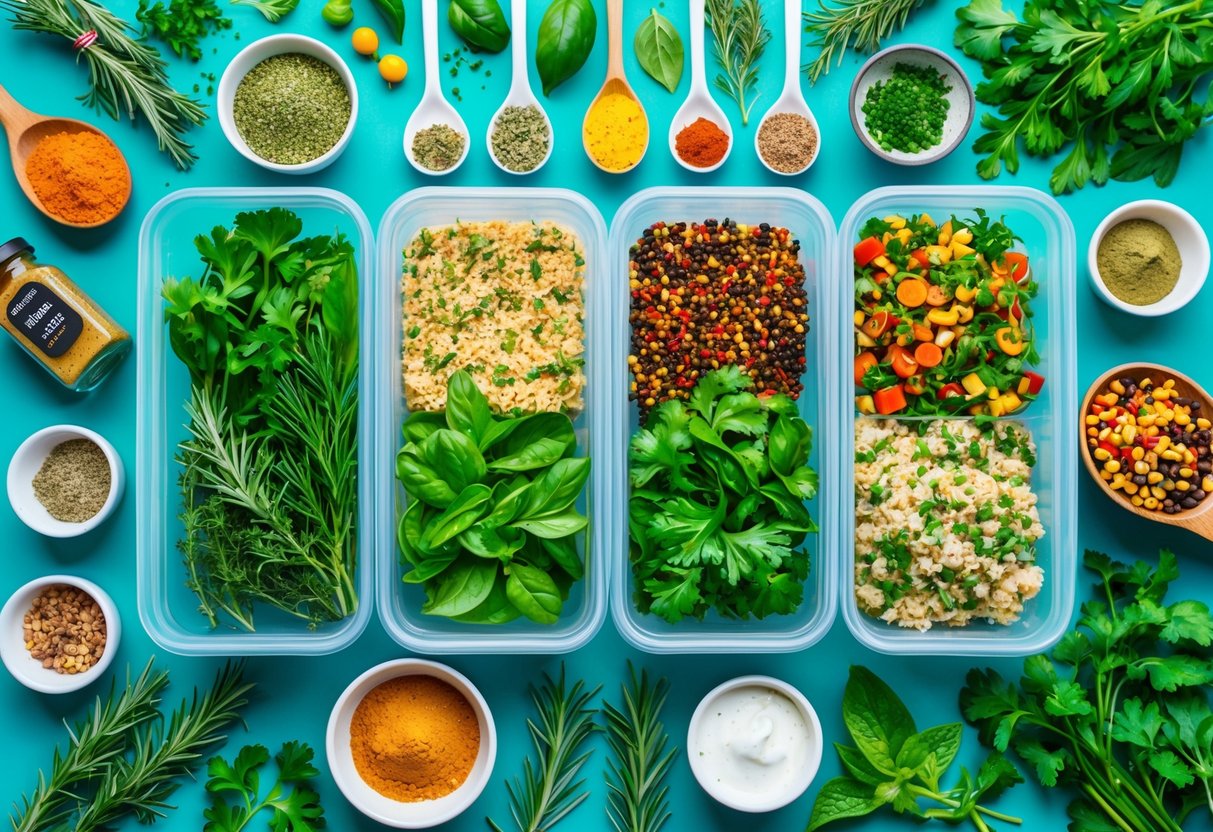
Creating high-protein meal prep dishes that are both satisfying and full of flavor is key to staying consistent.
The right seasonings, sauces, and toppings can transform basic ingredients into exciting, crave-worthy meals.
Incorporating Spices Like Ginger
Ginger can add warmth and a subtle spice to high-protein recipes.
It pairs especially well with chicken, tofu, or shrimp and complements vegetables like carrots and peppers.
Fresh ginger is best for marinades and stir-fries, while ground ginger can be added to sauces or spice blends used in meal prep.
A small amount brings out the natural flavors of proteins without overpowering the dish.
Ginger also has practical benefits—it aids digestion and helps balance oily or rich foods.
For example, adding ginger to a marinade for grilled chicken or roasted salmon can create depth of flavor.
Try combining ginger with garlic, soy sauce, or sesame oil for a balanced and aromatic taste profile that elevates plain proteins.
Use this approach to enhance the variety in your weekly high-protein meal rotation.
Using Dairy-Based Sauces and Toppings
Dairy-based elements like feta cheese and tzatziki add creaminess, tang, and extra protein to meal prep dishes.
Feta cheese brings a salty, crumbly texture and works well sprinkled over roasted vegetables, grain bowls, or salads containing grilled chicken or chickpeas.
Tzatziki, which is made from Greek yogurt, cucumber, garlic, and herbs, acts as a flavorful topping or dip.
It pairs well with lean proteins such as grilled turkey, chicken, or lamb and can also be layered in meal prep wraps and rice bowls.
Tzatziki provides extra protein and helps keep meals moist after reheating.
Experiment by pairing dairy toppings with various proteins, such as a chicken and quinoa bowl finished with crumbled feta, or roasted vegetables served with a dollop of tzatziki.
These simple additions prevent repetition and deliver a fresh taste each time.
Streamlining Grocery Shopping for High-Protein Meal Prep

Careful preparation before hitting the grocery store can transform meal prep from stressful to simple.
High-protein foods don’t have to break the bank or require hours in the kitchen if shopping is efficient and intentional.
Planning Your Grocery List
A detailed grocery list is the backbone of efficient meal prep.
Begin by mapping out all meals for the week, making sure to balance lean meats, eggs, tofu, beans, and Greek yogurt for protein.
Include vegetables, whole grains, and healthy fats to round out each meal.
Dividing the list by grocery store section—produce, dairy, proteins, grains—makes it much faster to navigate the aisles.
Using a table, such as the one below, keeps planning organized:
| Category | High-Protein Foods | Examples |
|---|---|---|
| Dairy | Greek yogurt, cheese | 2% Greek yogurt, cottage cheese |
| Meat/Seafood | Chicken, fish | Chicken breast, canned tuna |
| Plant-Based | Beans, tofu | Black beans, firm tofu |
Opt for larger value packs on staple proteins and look for sales on canned or frozen options, as these offer both savings and convenience for batch-cooking.
Lists also help avoid impulse purchases and keep meal prep focused and cost-effective.
Tips for Efficient Grocery Trips
Sticking to the prepared grocery list keeps shopping trips focused.
Choose quieter shopping hours, such as early mornings or weekday evenings, to avoid crowds and make the trip faster.
Shop the store perimeter first, where fresh proteins, produce, and dairy are located.
Reserve the center aisles for specific staples like canned beans or grains, and skip any aisles that don’t include meal prep essentials to save time.
Take advantage of apps for list organization and scanning ingredients on the go.
Some meal prep resources recommend browsing weekly circulars online to spot discounts or protein deals before leaving home.
If shopping in bulk, split large protein packages into portions and freeze extras.
This ensures a steady supply of high-protein ingredients for future meals while reducing waste and saving money.
Frequently Asked Questions
How can I plan a high-protein vegetarian meal prep for the week?
Vegetarian high-protein meal prep can include foods like tofu, tempeh, lentils, chickpeas, black beans, cottage cheese, and Greek yogurt.
Mixing these protein sources with grains such as quinoa and legumes helps reach higher protein targets while supporting vegetarian nutrition.
Batch cooking meals like bean chili, tofu stir-fry, or lentil curry and pairing them with whole grains provides nutrient-rich options throughout the week.
Roasted chickpeas and protein-rich overnight oats are also excellent vegetarian options.
What are some cost-effective high-protein meals suitable for meal prep?
Affordable high-protein meal prep meals often use ingredients such as eggs, cottage cheese, canned tuna, lentils, beans, or chicken thighs.
Dishes like egg muffins, chili, and stir-fries using seasonal vegetables and cheaper cuts of meat provide protein without a high cost.
Slow cooker recipes, large casseroles, and bulk-prepared legumes keep meal prep simple and budget-friendly.
What high-protein recipes can support weight loss and are good for meal prepping?
High-protein recipes for weight loss should emphasize lean protein, moderate carbohydrates, and low added fats.
Options like grilled chicken breast with steamed vegetables, turkey chili, or Greek yogurt parfaits with berries are filling and support healthy weight management.
Prepping baked salmon with quinoa or making chicken and vegetable bowls are both effective for controlling calories while maximizing protein intake.
How do I ensure my meal prep contains at least 40 grams of protein per meal?
Include a main protein source such as 6 oz chicken breast, 1½ cups cooked lentils, or 7 oz firm tofu in each portion.
Add sides like cottage cheese, Greek yogurt, or edamame for an extra protein boost.
Tracking protein content during meal prep is essential.
Reading nutrition labels and using digital tools can help accurately measure protein per serving and hit the 40-gram target.
Combining complementary plant-based sources can also raise the overall protein content.
Can you suggest a 7-day high-protein meal plan for someone trying to gain muscle?
A muscle-gain meal plan should feature foods such as lean beef, chicken, salmon, shrimp, eggs, and high-protein dairy.
A sample plan may include scrambled eggs with turkey sausage for breakfast, grilled chicken salads for lunch, protein shakes as snacks, and beef stir-fry for dinner.
Rotating protein varieties across the week prevents monotony.
Using prepped ingredients like roasted chicken, cooked grains, and chopped vegetables streamlines the meal assembly process while ensuring sufficient caloric and protein intake for muscle growth.
What are the top high-protein foods to include in my meal prep for a balanced diet?
Top choices for a balanced, high-protein meal prep include lean meats like chicken breast, turkey, and fish. Eggs, cottage cheese, Greek yogurt, and tofu are also excellent options.
Beans, lentils, and quinoa provide plant-based protein while offering fiber and micronutrients. Combining animal and plant-based proteins helps diversify nutrient intake and keeps meals interesting.
For additional ideas on the best foods to include, review these high-protein meal prep recommendations.

